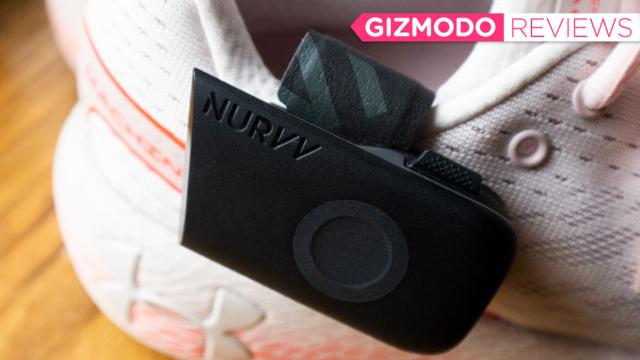I’ve never been a particularly fast runner. As a wearables reviewer, that kind of bugged me because so many running apps and smartwatches are geared toward helping you get faster. But no matter how many interval runs, fartleks, or tempo runs I did, I struggled to shave off more than 20-30 seconds off my time. Which is why I’ve been so intrigued by the Nurvv Run system and its promise of improved speeds and form.
Nurvv Run is a pair of smart insoles that has 16 high-precision sensors for each foot, as well as built-in GPS and motion sensors. The idea is to track not only your pace, cadence, splits, stride, and distance, but also your running form, which includes factors like footstrike and pronation — or which part of your foot you land on from front-to-back, and side-to-side, respectively. It also has a companion app that helps you determine what your ideal training load is, and guided audio coaching. If you hate running with your phone, you can also pair it with an Apple Watch or Garmin so you don’t have to lose out on coaching. It’s, in a word, comprehensive.
It’s also frickin’ expensive.
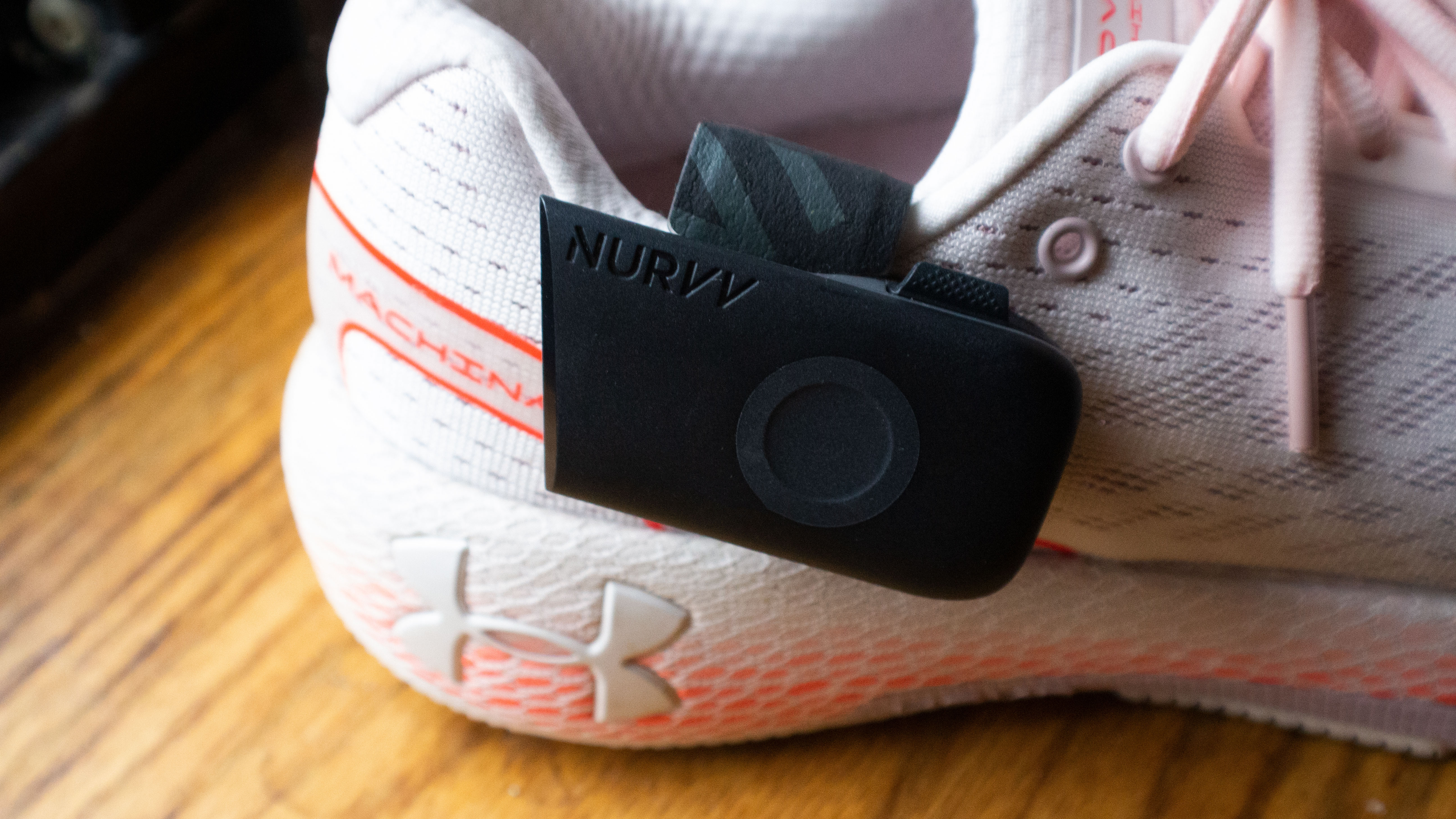
Nurvv Run
What is it?
Smart insoles that help you run faster and more safely
Price
Around $400
Like
I definitely ran faster! Helpful app for determining training load and distance.
No Like
Did you see these things are FOUR HUNDRED DOLLARS? No way to improve footstrike or pronation in real time while running outdoors. AI coach can be a little stressful!
At $400, the Nurvv Run insoles are more expensive than an entry-level Apple Watch SE, Fitbit Versa 3, and several Garmin and Polar running watches. Some of these smartwatches are able to tell you advanced running metrics like cadence, pace, splits, distance, GPS routes, and also your heart rate (a thing insoles can’t do). Some running apps also offer audio coaching, and you also have smart running shoes to consider. Under Armour has an entire line of them — and at most they cost $200. So why in the world would anyone want to shell out $400 for insoles that don’t even add extra cushioning?
Well, there’s a good reason: Improving form to run injury-free. Everyone has their own personal gait while running, and most running injuries can be linked back to poor form. Most people are overstriding, over- or under-pronating, or running at too slow a cadence. Packing in too many runs per week or increasing mileage at too fast a rate is also a recipe for injury. And while smartwatches have gotten pretty advanced, many have a singular focus on always doing more and faster. Ironically, that’s actually not that great for running. Nurvv’s schtick is that it can help you identify what parts of your form could do with improving, as well as guidance on how to train safely. It’s basically stuff a running coach might help you with, but the insoles cost a lot less (though they are still pretty expensive).
The price had me grimacing, but I figured I had nothing to lose by trying out the insoles. As I mentioned, I’m not particularly fast, and whenever I’m doing speedwork, I find it hard to keep a consistent pace. On paper, the Nurvv Run sounded like it might help add a little oomph to my training.
The insoles themselves are pretty straight forward. They’re insoles. You order the right size, take out the insoles in your running shoes, stick these in, and replace your regular insoles on top. On the bottom, you can actually see the sensors themselves, which have a nice sci-fi vibe to them — not that you’ll ever see them, because they live inside your stinky running sneakers. On the sides, there’s a velcro clip designed to attach to your shoe’s upper. There’s also a cradle on the outside of the clip where you can snap in the GPS/motion tracker — one for each foot. The insoles are rated IP67 for water resistance, so they should be alright for rainy runs. Luckily, I haven’t had to run in the rain for a few months, but I didn’t have any incidents when I ran through some puddles.

Design-wise, the only real problem I had was learning how to snap the trackers on and off my shoes, and onto the charger. You have to place your thumb at the exact right pressure points, which are marked with a raised texture. It can be extremely difficult, and counterintuitively, you’re not supposed to use that much force. I got the hang of it eventually, but I suspect it’s because a Nurvv spokesperson was very patient with me as I learned during a demo. I doubt it’d be easy to suss out without an instructional video or demo. (Thankfully, Nurvv’s site has many video tutorials.)
As for durability, one thing in these smart insoles’ favour is they’ll outlast your shoes. Nurvv says they should actually last for three pairs of shoes. Given that you’re supposed to swap out running shoes every 480-800 kilometres, you could get anywhere between 1,500 to 2,400 kilometres out of a single pair. Depending on your weekly mileage, that could be anywhere from roughly 4.5 months to a few years. So obviously, if you’re someone who puts in 65-80 kilometres per week, the cost will be exponentially more expensive to stick with this platform than someone who’s doing 15-30 kilometres per week.
That same variability also applies to how often you’ll need to charge the trackers. I got about 5.5 hours per charge, which for me, meant I had to charge these bad boys every week or week and a half. Generally, however, I found you don’t want to run with less than 30 minutes of battery left. I had a half hour of battery left when I started one run and had planned to only go for a short 25 minutes. The trackers died on me about 20 minutes in, so only part of my run was recorded.
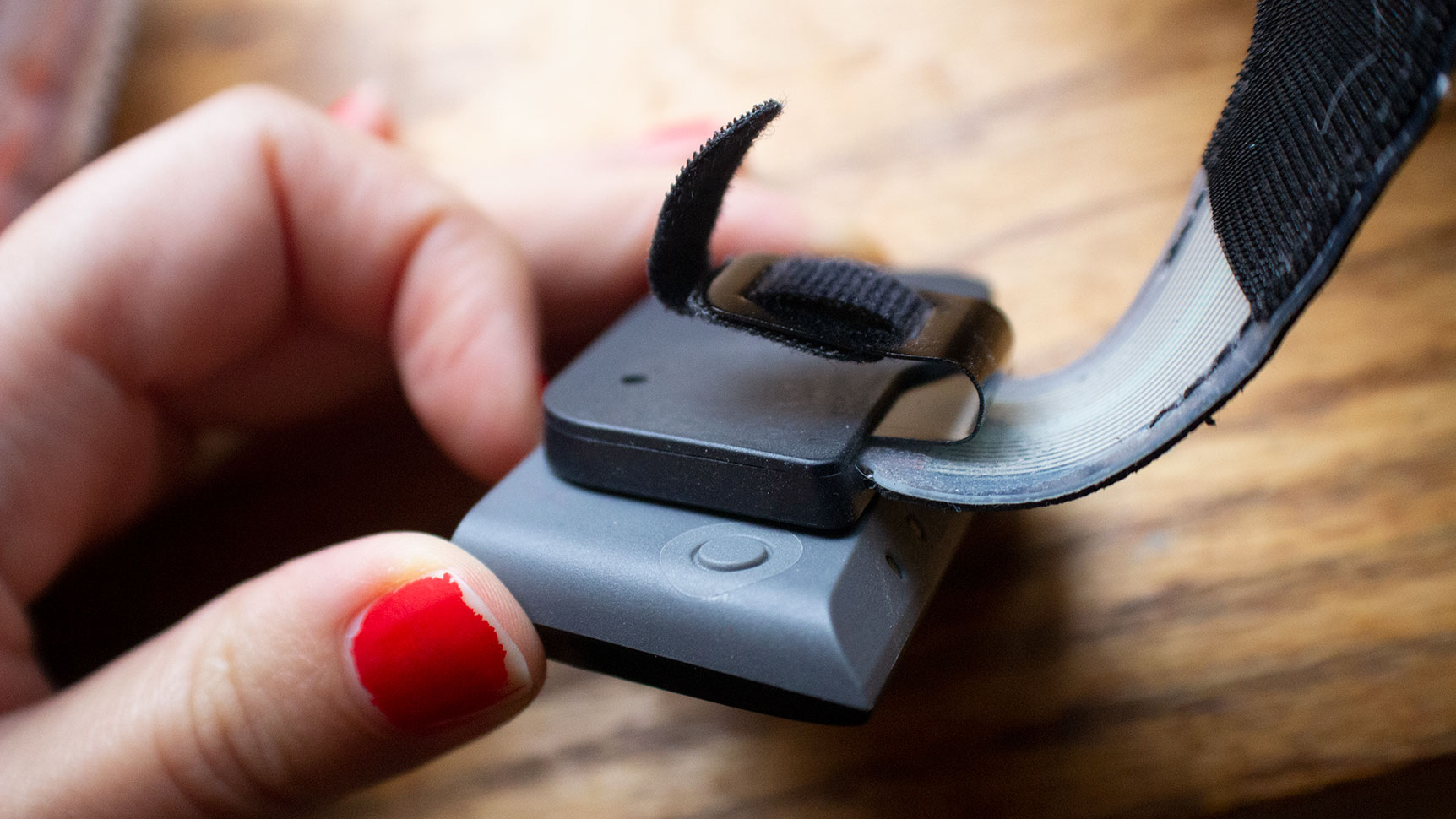
Overall, I found running with the insoles didn’t feel much different. As far as comfort went, I didn’t get any chafing on my ankles. I was also pleased with how it it was transferring them from one pair of shoes to another. There are definitely some quirks, however. My biggest gripe is it takes the trackers longer than my smartwatches to find GPS signal. This might be because the buildings in Manhattan are notorious for blocking GPS, but on cold, windy mornings, I didn’t appreciate hopping from foot to foot, trying to stay warm while waiting for the trackers to find a signal.
As for audio coaching, that actually takes a while to get started. You first have to run a few “base” outdoor runs so the Nurvv app can get a sense of your running style. Once you have at least one base run to choose from, you can create a technique run based on pace. On a
“Pace Coach” run, you’ll get a numerical score that’s built off of your selected base run. You can move the number up to increase difficulty (run faster), or slide it down to make it easier (run slower). At that point, it’ll spit out a suggested cadence and step length range to hit for that run.
It works! Whenever I did pace coach runs, I most definitely ran faster. In fact, after about three weeks of running with Nurvv, I broke four personal records and shaved 2.5 minutes off my best 5K time of 2020. As a slower runner, that blew my mind. The process, however, was kind of miserable. I had an AI voice telling me to boost and decrease my step length, or increase or decrease my cadence nonstop. This was a reminder that I struggle to keep a consistent pace at faster speeds, but it also made my runs — which are a major form of de-stressing for me — incredibly stressful. It was also harrowing when trying to run more slowly on my recovery runs. And finally, my other pet peeve was that there wasn’t really a way to get guidance for interval runs.
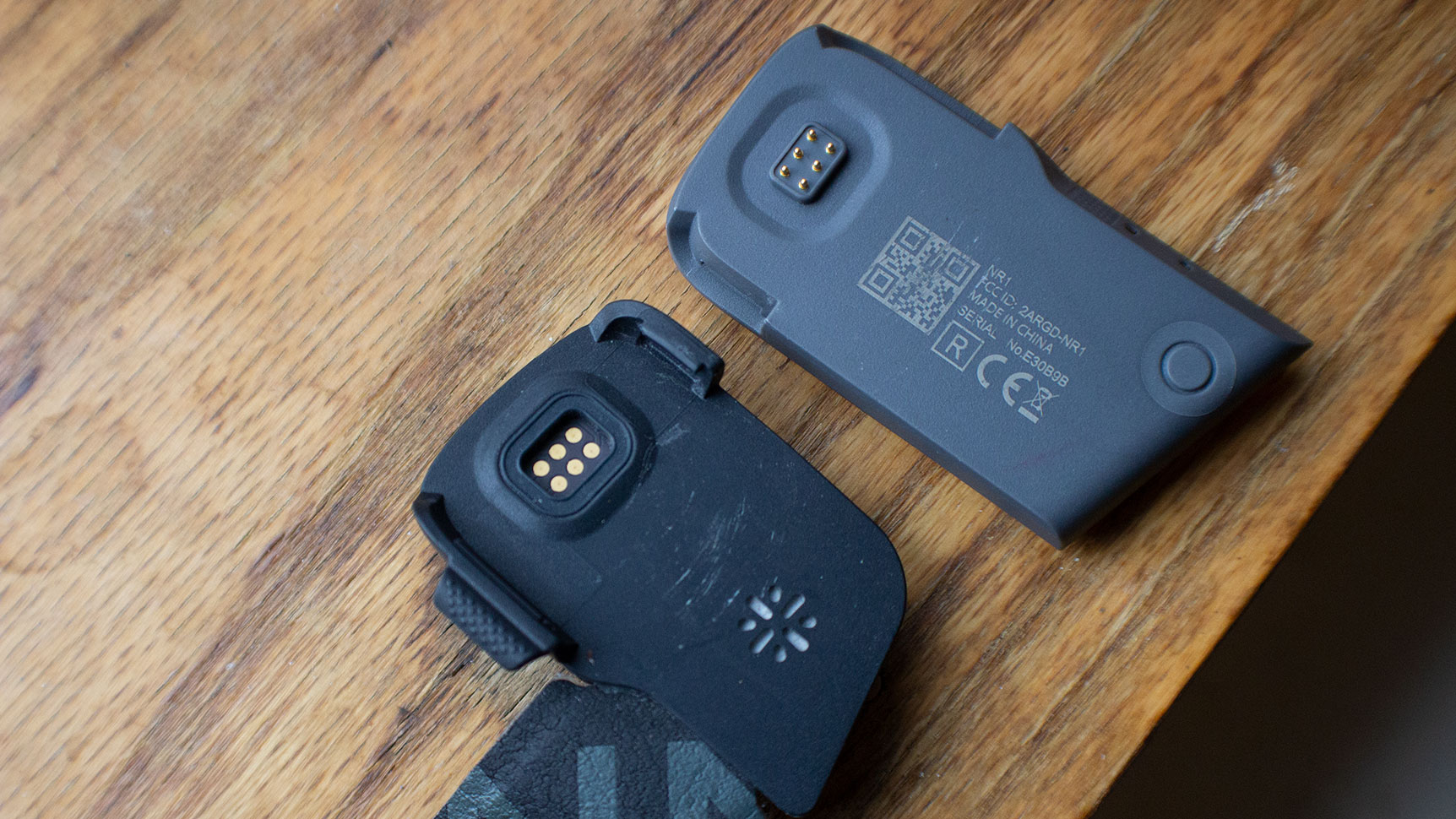
What I found more helpful was the training load recommendations in the app itself. On the home screen, you can check your “running health trend” which is an amalgamated score based on training load, cadence, pronation, and balance (a metric that determines the asymmetry between your legs while running). I also liked the training recommendations, in that I could easily see whether I was overtraining, in the right zone, or undertraining. It was also nice to see a recommended distance range so I could maintain an optimal training load.
Now, here’s where I’m torn. Half the premise of these insoles is to become a better runner. When I first started using the insoles, my score was 100. For two weeks. I had several days where this app told me I had absolutely nothing to improve. I knew this couldn’t be true, because in January, Asics analysed my running form during CES and gave me a B. Then, once I switched running shoes, my pronation score went into freefall. I absolutely haven’t changed the way I run at all, and given that I re-bought the same pair of sneakers, I’m not sure why this would have happened. I’m not doubting these insoles when they say I overpronate — I am flat-footed and if you’re flat-footed you tend to overpronate. There were helpful tips in the app on exercises to improve pronation, but nothing that’s really helped me improve while running. I’ve since given up on my pronation score, seeing as I’m doing all the right foot and ankle exercises, have an arch support insole (on top of the Nurvv insole!), and I’m running pain-free.
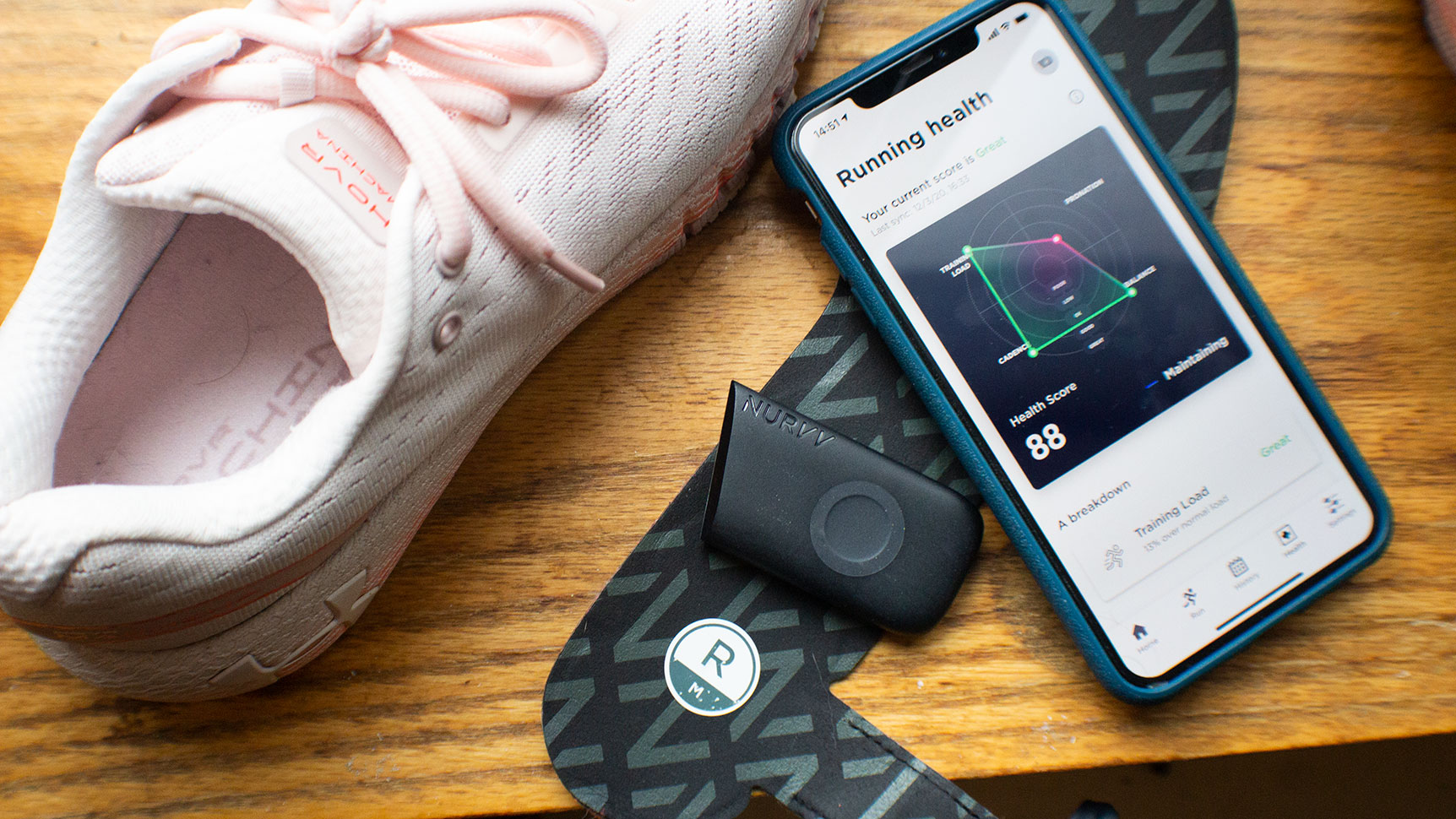
I also run with smart sneakers that have told me my average footstrike angle falls anywhere between 7-9 degrees, which is a mid footstrike pattern. This was something that Asics confirmed when they analysed my form. However, the Nurvv insoles say I am a 99% heel-strike runner. You can kind of suss what running pattern you have if you stare really long and hard at a worn pair of running sneakers — but my investigations were inconclusive as my wear and tear seemed evenly distributed. This made me want to tear my hair out. I know it’s not ideal to be a heel-strike runner but again, the app didn’t offer me ways to improve while running outside. (You can only see real-time feedback for footstrike while running on a treadmill for safety reasons. However, I don’t have access to a treadmill because of the pandemic.)
If you think that being a faster runner means you’re a better runner, I guess you can say the Nurvv Run helped. But if the goal is to run with better form, I don’t think I’ve really benefitted. Unfortunately, I don’t know if I can get over the sticker shock to stick it out. Perhaps these insoles will be something I whip out when I’m training for my next race and want to shave a few seconds off my splits. In the meantime, I think I’ll just keep to my $40-a-year running app.
README
- Smart insoles that claim to help you run faster, more safely
- Measures metrics like cadence, stride, pace, footstrike, distance, pronation — you name it
- Also includes audio-guided pace workouts, and in-app tips on training load and exercises to improve your form
- Can be used outdoors or indoors, and is compatible with the Apple Watch and some Garmins for people who like phone-free runs.
- HOLY SMOKES IT’S $400?!?!?!?!?!?!?!
